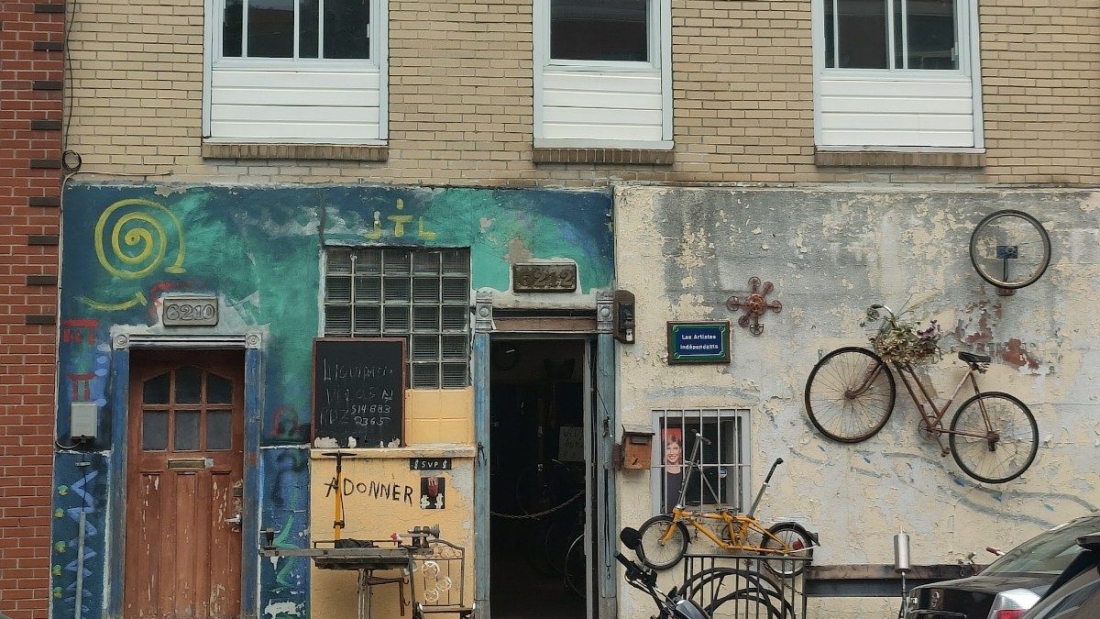As a new arrival to the city and an old hat at hating car culture, I have wanted to write about cycling (and walking) in Montreal. As my captive audience of one, you have no choice but to read on.
Some background before opinions
I moved to Montreal towards the end of the 2022 summer. That gave me a couple of months to use the BIXI, the local bike-share service (this should be the actual “ride-share” because since when did cars get ridden!?) I wanted to do a post on my initial experiences with the service but never got around to. And now that I’ve bought my own cycle, I can safely push that to my graveyard of unfinished projects.
Anyway, after nearly a full year of experiencing active transport in the city, and because I saw Oh The Urbanity’s latest video on Montreal, I feel it’s time to open up about why I actually moved to this city.
The positives
Separated bikes lanes
This has got to be one of the best things a city can do to get more people on bikes. A protected bike lane eliminates the stress around engaging with cars and increasingly monster trucks. In fact, my very first blog post on this site was wishing for more protected bike lanes while I was back in New Zealand. I often use the Réseau Express Vélo (REV), a fully separated, one-way bike lane on Saint Denis Street, and whose network will be expanded in the future. And this is not the only one; there are also many other separated bike paths on Île de Montréal (Island of Montreal) which form a great network that helps people of all ages to have more active transport.
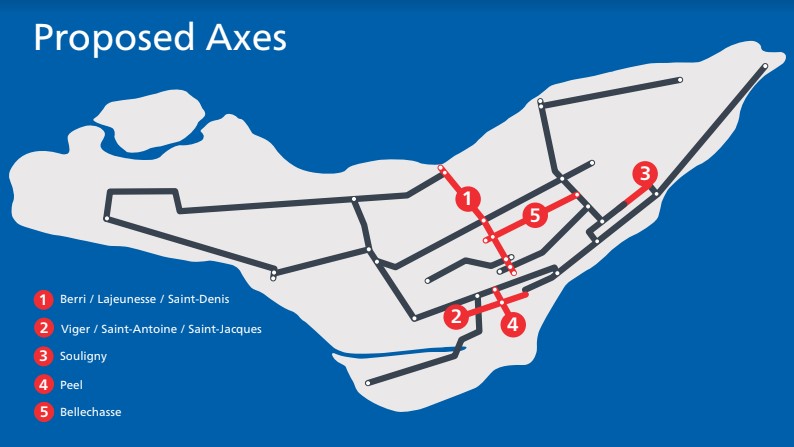
BIXI
As mentioned earlier, Bixi is the city’s bike share service. You can unlock a bike or ebike from one of hundreds of stations in the city, ride it to the station closest to your destination and dock it there. You buy a monthly or season pass, or single fares, and unlock the bike via the app. Going by the number of people I see using it everyday, it seems incredibly popular.
Pedestrian priority streets
Another step in the right direction is turning streets over to pedestrians. Montreal does this in summers with many streets becoming closed off to cars. This encourages businesses to put up outdoor seating, people putting up little pop-up stores with vintage things, and plenty of open air ice cream gobbling! (Actually, the next time a city needs sponsors or support for pedestrian-only streets, it should go to local ice cream shops.) Bikes are allowed on these streets but it’s recommended to walk your bike if it’s crowded.
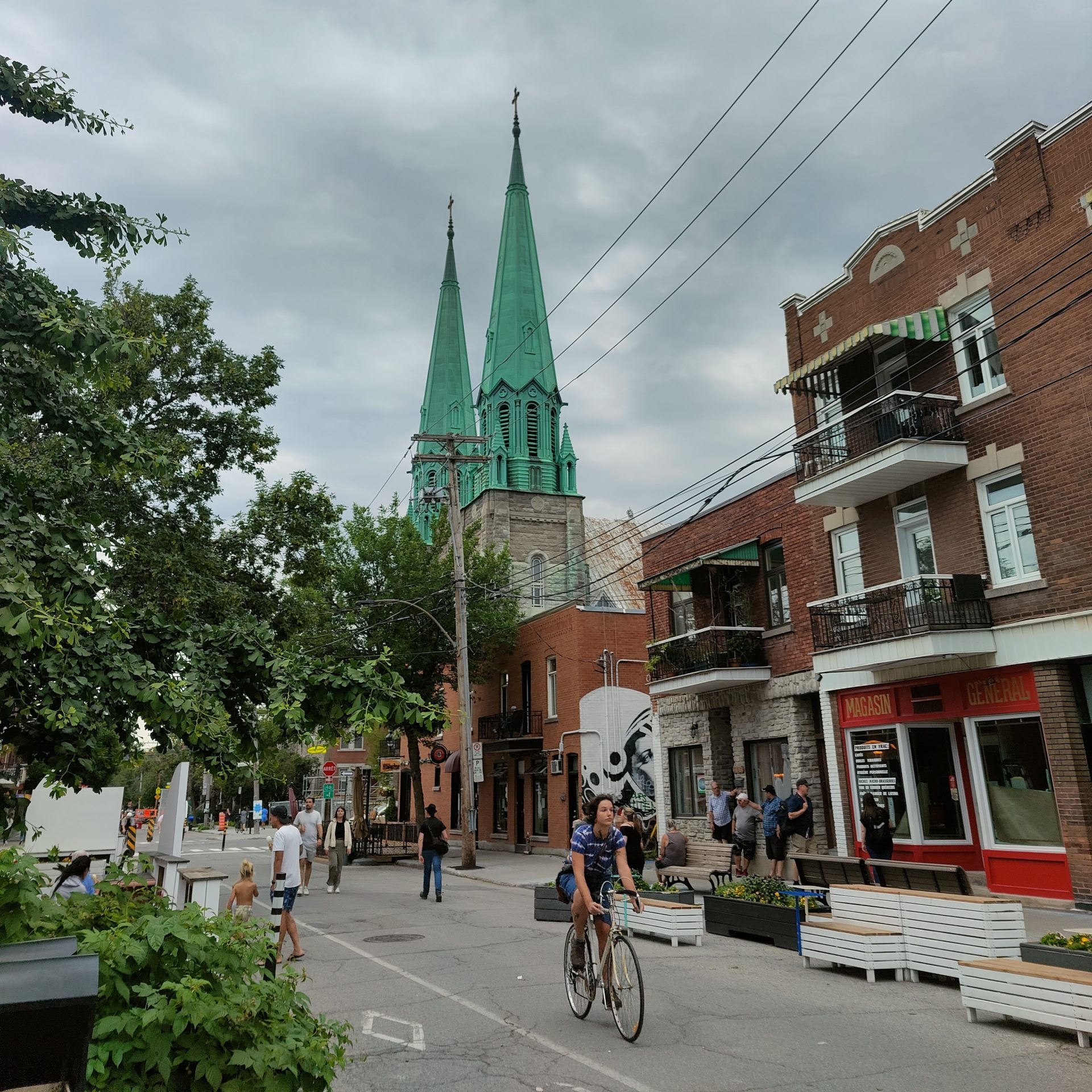
A vibrant cycling culture for all ages
Perhaps a direct consequence of separated bike paths and pedestrian-priority streets is the reclaiming of freedom by kids, old people and those with differently abled bodies. It is quite common to see families with small children, all biking, or a parent riding a small cargo bike with the little ones in the front or back.
Fewer trucks and SUVs
Unlike the car-dominated hellscapes that are many cities of Ontario, Montreal seems to have fewer monster vehicles like pickup trucks and SUVs. Disclosure: This is something that I have observed, not something I can back up with car sales numbers. Rosemont La Petite Patrie, one of the neighbourhoods, recently introduced a street parking fee based on vehicle weight, just another example of the resistance that exists here against ego inflating hunks of metal.
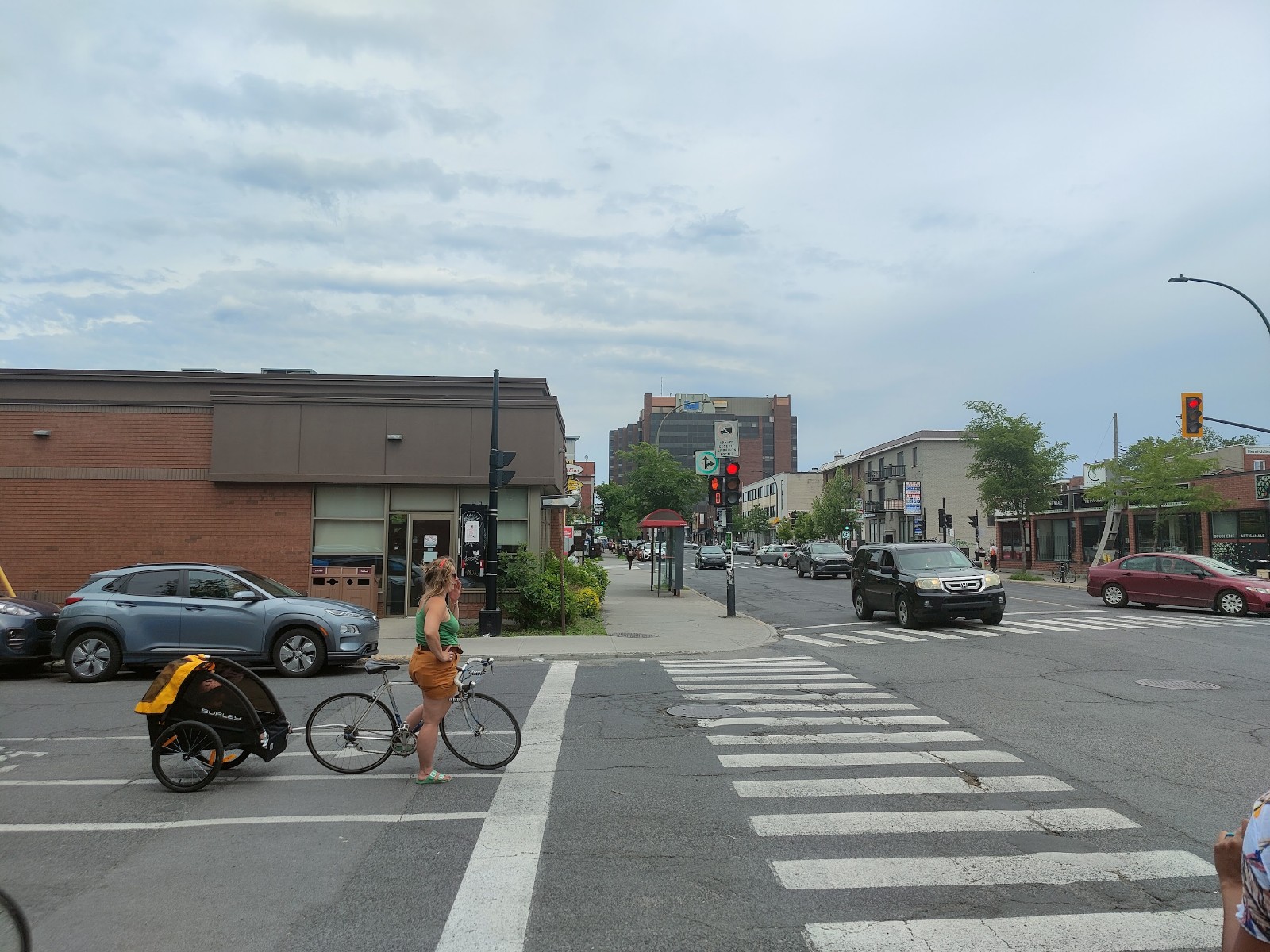
Riding without helmets
Another consequence of protected bike infrastructure is helmets becoming redundant. There are a number of bike advocates who say that helmets, like hi-vis vests, are just a way of shifting blame (“safety-washing”?), even suggesting that they might be counterproductive. It is clear that if you have fewer interaction points with disproportionately heavier road users (a.k.a. cars), you really don’t need helmets. Legally though, the city probably still needs cyclists to wear them but interestingly BIXI users are exempted.
Winter snow clearing
The moment I tell friends or family that I’ve bought a bike, I get one of the following reactions/questions:
“What about winters?”
“The most you can use your bike for is five months.”
Snowfall and extreme cold are not everyday events even in winter so while these extrapolations are not fully logical, I do get the concern. You need more confidence biking in winters than in summers. Thankfully, Montreal is very good at keeping its bike lanes clear of snow, and besides you can get studded tires if you want some additional safety, and this is why you can find plenty of people biking throughout the year. In fact, this year onwards, the city will also do a trial of the BIXI in winter.
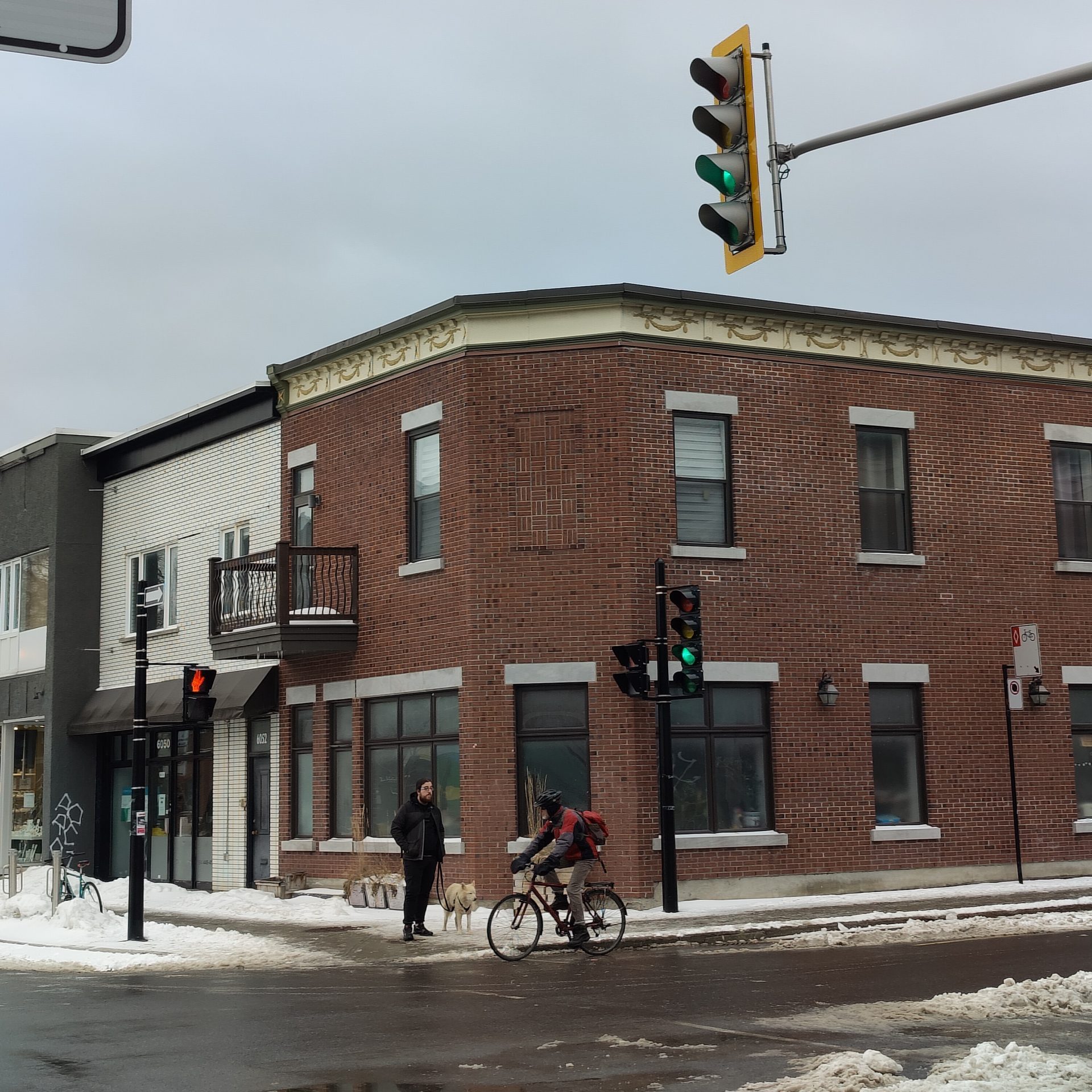
The negatives
Pedestrian priority streets not year round
The pedestrian only streets mentioned earlier are only a summer feature. However, some of these streets, like Avenue Mont Royal, have so many pedestrians throughout the year that it would be great to make them more pedestrian focused during other parts of the year.
Bumpy roads
The roads in this city are pretty worn down, and riding a bike is a good way to experience their state. While larger automobiles are usually the culprits behind them, it is the smaller road users that end up paying the price for it. One can only hope that by the time a street needs resurfacing, it’ll be redesigned to include more active transport, like they do in the Netherlands. This will slowly upgrade the bike lane network which requires much less resurfacing as compared to the main street.
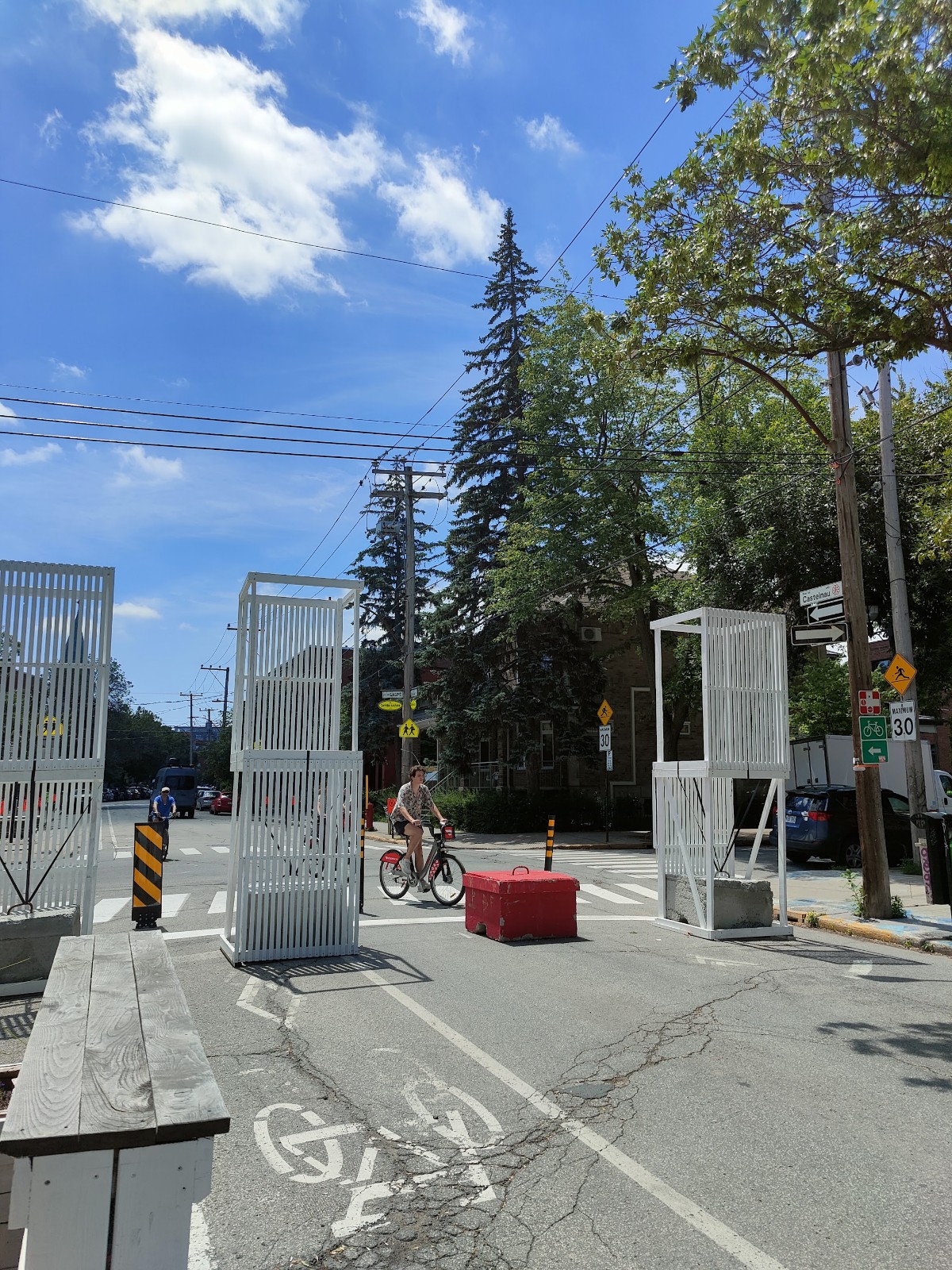
On-street parking
They say if you want to know how vile people of a place are, give them free street parking and then take it away! Like many North American cities, Montreal too has a tonne of street parking that stems from the worship of the automobile.
Avenue Mont Royal, one of the pedestrian streets I mentioned earlier, even when not pedestrianised, has so much foot traffic that you have to jostle people on footpaths. And yet, this street gives away street parking. Hopefully, with road resurfacing or other projects, we’ll be able to take away street parking in many more streets. Anyway, if I didn’t make it amply clear, I have a lot of beef with the idea of storing private furniture on a public road but I’ll elaborate that in a separate blog in the future.
You made it to the end. For more Montreal urban fabric fanboying, and to develop a healthy distaste of car dependency, pedal your way back to this blog.
